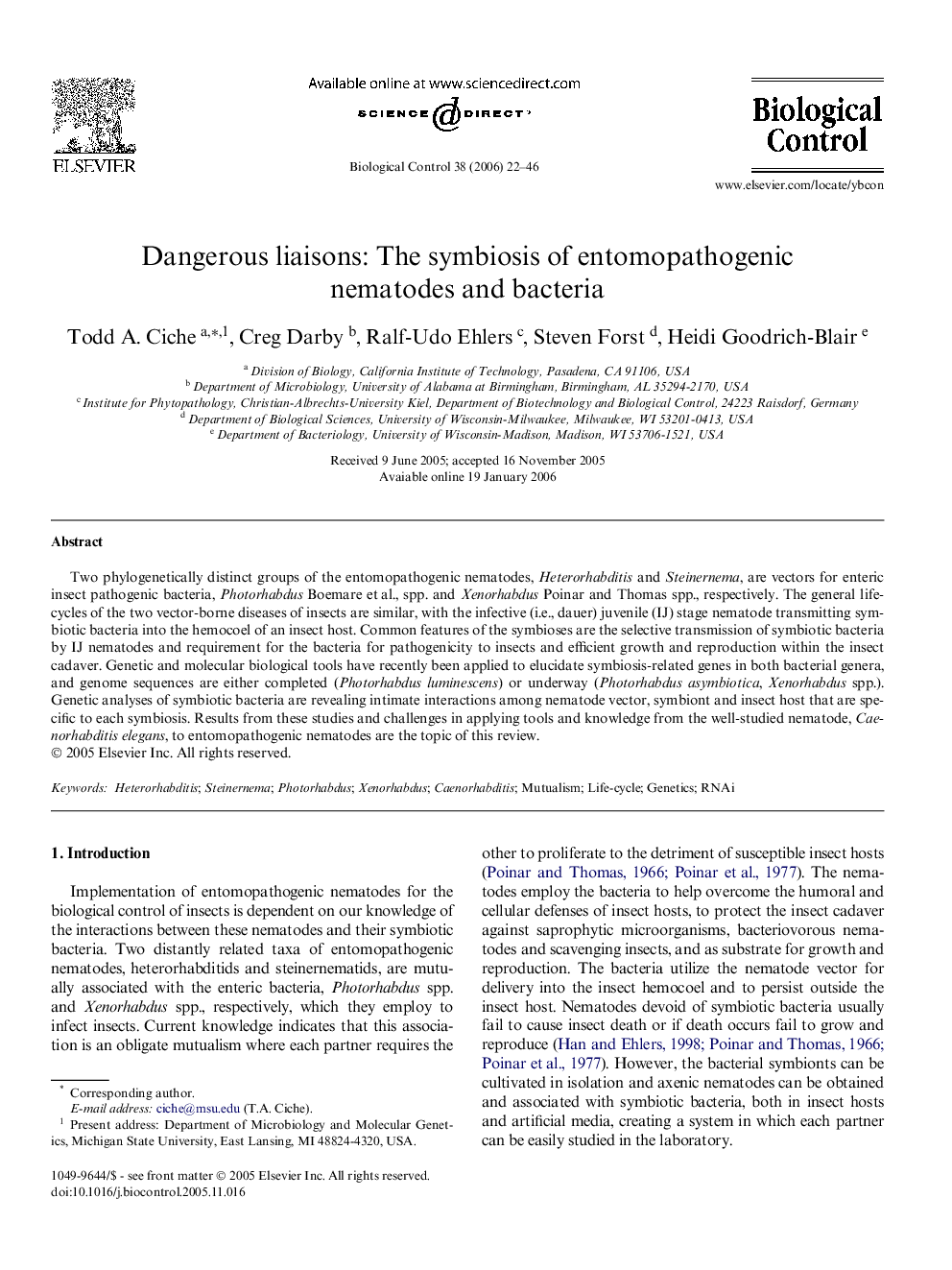| Article ID | Journal | Published Year | Pages | File Type |
|---|---|---|---|---|
| 4505359 | Biological Control | 2006 | 25 Pages |
Two phylogenetically distinct groups of the entomopathogenic nematodes, Heterorhabditis and Steinernema, are vectors for enteric insect pathogenic bacteria, Photorhabdus Boemare et al., spp. and Xenorhabdus Poinar and Thomas spp., respectively. The general life-cycles of the two vector-borne diseases of insects are similar, with the infective (i.e., dauer) juvenile (IJ) stage nematode transmitting symbiotic bacteria into the hemocoel of an insect host. Common features of the symbioses are the selective transmission of symbiotic bacteria by IJ nematodes and requirement for the bacteria for pathogenicity to insects and efficient growth and reproduction within the insect cadaver. Genetic and molecular biological tools have recently been applied to elucidate symbiosis-related genes in both bacterial genera, and genome sequences are either completed (Photorhabdus luminescens) or underway (Photorhabdus asymbiotica, Xenorhabdus spp.). Genetic analyses of symbiotic bacteria are revealing intimate interactions among nematode vector, symbiont and insect host that are specific to each symbiosis. Results from these studies and challenges in applying tools and knowledge from the well-studied nematode, Caenorhabditis elegans, to entomopathogenic nematodes are the topic of this review.
